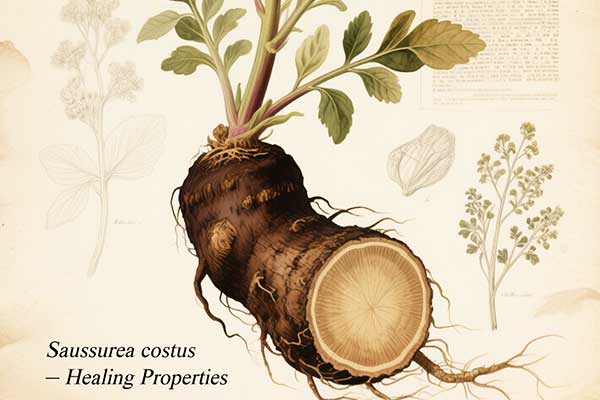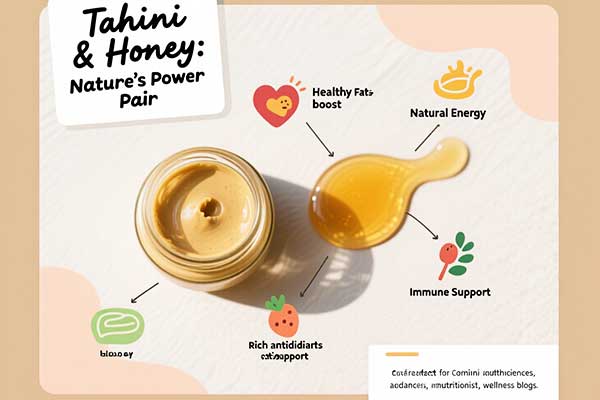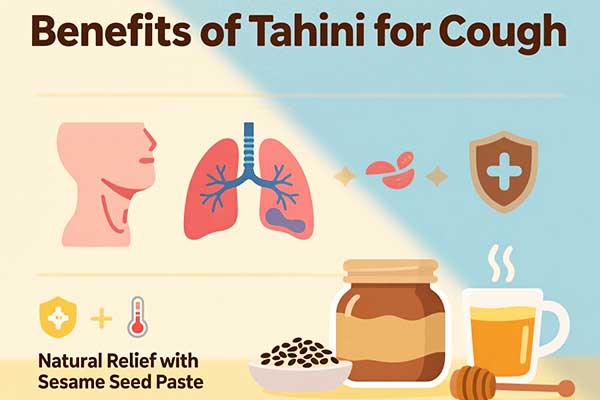Saussurea Costus Benefits: Complete Science-Based Health Guide 2024
Discover the comprehensive therapeutic properties of this ancient Himalayan herb backed by modern scientific research and traditional wisdom
Quick Navigation
Quick Summary
Traditional Use
Over 2,500 years of documented medicinal use in Ayurveda, Chinese, and Tibetan medicine
Scientific Validation
Extensive research confirms anti-inflammatory, antioxidant, and hepatoprotective properties
Safety Profile
Generally safe when used appropriately, with specific precautions for aristolochic acid contamination
What is Saussurea Costus?
Saussurea costus (Falc.) Lipsch., formerly known as Saussurea lappa, is a critically endangered medicinal plant belonging to the Asteraceae family. Native to the high-altitude regions of the Western Himalayas, this remarkable herb has been treasured for over 2,500 years across various traditional medicine systems including Ayurveda, Unani, Chinese, and Tibetan medicine.
Also Known As:
- English: Costus root, Indian costus
- Arabic: Qust (قسط), Al-Qust al-Hindi
- Sanskrit: Kushtha, Kankustha
- Hindi: Kuth
- Scientific: Dolomiaea costus (current accepted name)
Botanical Characteristics
This perennial herb grows naturally at altitudes of 2,600-4,000 meters in the Western Himalayan regions of Pakistan and India. The plant produces a distinctive thick, woody root that serves as the primary medicinal part, characterized by its bitter taste and strong aromatic odor.
Physical Features
- • Height: 1-2 meters
- • Root: Thick, woody, aromatic
- • Leaves: Large, ovate, serrated
- • Flowers: Purple, thistle-like
- • Habitat: Rocky slopes, alpine meadows
Conservation Status
- • Status: Critically Endangered
- • Main threats: Over-harvesting
- • Commercial cultivation: Limited
- • Protection: CITES listed
- • Sustainability: Research ongoing
The increasing demand for this valuable herb, combined with its slow growth and limited habitat, has led to significant conservation concerns. Sustainable cultivation and harvesting practices are crucial for preserving this important medicinal resource for future generations.
Traditional Medicine Applications
Saussurea costus has been extensively documented in various traditional medicine systems, with each culture recognizing its unique therapeutic properties. The herb’s versatility is evident in its wide range of traditional applications across different geographical regions.
Ayurveda
- • Rasayana: General health tonic and rejuvenative
- • Deepan-Pachan: Digestive stimulant and carminative
- • Vata-Kapha disorders: Respiratory and joint conditions
- • Medhya Rasayana: Brain tonic and memory enhancer
- • Kushtaghna: Skin disorders and infections
Learn more about natural health tonics and their benefits.
Traditional Chinese Medicine
- • Mu Xiang: Qi regulation and stomach warming
- • Spleen-Stomach support: Digestive disorders
- • Anti-viral: Cold and flu symptoms
- • Pain relief: Abdominal and chest pain
- • Anti-diarrheal: Intestinal disorders
Unani Medicine
- • Muqawwi-e-Dimagh: Brain and nerve strengthener
- • Mohallil-e-Waram: Anti-inflammatory properties
- • Mudir-e-Haiz: Menstrual regulation
- • Anthelmintic: Parasitic worm treatment
- • Aphrodisiac: Reproductive health support
Regional Traditional Applications
Himalayan Regions
- • Respiratory disorders (asthma, bronchitis)
- • Digestive problems (dysentery, stomach ulcers)
- • Rheumatoid arthritis and joint pain
- • Skin conditions and wound healing
Middle Eastern Use
- • Prophetic medicine applications
- • General health maintenance
- • Digestive system support
- • Immune system strengthening
Historical Documentation
Ancient texts document Saussurea costus usage dating back over 2,500 years, with detailed preparations and applications described in classical Ayurvedic texts like Charaka Samhita and Sushruta Samhita. The herb’s inclusion in traditional formulations demonstrates its recognized efficacy and safety profile when used appropriately.
Note: Traditional uses are based on historical practices and should be evaluated alongside modern scientific evidence. For comprehensive natural health approaches, explore our guide on evidence-based natural remedies.
Science-Backed Health Benefits
Modern scientific research has validated many traditional uses of Saussurea costus, revealing its complex mechanisms of action and therapeutic potential. The following benefits are supported by peer-reviewed studies and clinical research.
Anti-Inflammatory Properties
Research Findings
- • Cytokine reduction: Significant decrease in IL-1β and TNF-α production
- • NF-κB pathway: Inhibition of inflammatory signaling cascades
- • Carrageenan model: Reduced paw edema in animal studies
- • Dose-dependent: Effects correlate with concentration
Clinical Applications
- • Rheumatoid arthritis symptom management
- • Inflammatory bowel conditions
- • Respiratory inflammation (asthma, bronchitis)
- • Skin inflammatory conditions
Mechanism: Costunolide and dehydrocostus lactone inhibit AP-1 transcription factor and mitogen-activated protein kinase phosphorylation, reducing inflammatory mediator production.
Antioxidant Activity
Oxidative Stress Protection
- • Free radical scavenging: DPPH and ABTS assay positive results
- • Lipid peroxidation: Reduced MDA levels in tissues
- • Glutathione preservation: Maintained cellular antioxidant systems
- • DNA protection: Reduced oxidative DNA damage
Protective Effects
- • Cardiovascular protection
- • Neurological preservation
- • Liver antioxidant support
- • Anti-aging cellular effects
Hepatoprotective Effects
Liver Protection Mechanisms
- • Enzyme regulation: Normalized ALT, AST, and ALP levels
- • Cellular preservation: Maintained hepatocyte integrity
- • Detoxification support: Enhanced liver metabolic functions
- • Regenerative effects: Promoted liver tissue repair
Research Evidence
- • Carbon tetrachloride toxicity protection
- • D-galactosamine induced hepatitis amelioration
- • Paracetamol overdose liver protection
- • Improved liver histology in studies
For comprehensive liver health support, consider exploring our natural approaches to overall wellness.
Antimicrobial Properties
Antibacterial
- • Gram-positive bacteria
- • Gram-negative bacteria
- • Multi-drug resistant strains
- • Biofilm disruption
Antifungal
- • Candida albicans
- • Non-albicans Candida
- • Dermatophytes
- • Aspergillus species
Antiviral
- • SARS-CoV-2 protease inhibition
- • Herpes virus activity
- • Influenza virus resistance
- • Viral replication interference
Metabolic Support
- • Blood glucose regulation: Improved insulin sensitivity
- • Lipid profile: Reduced cholesterol and triglycerides
- • Weight management: Metabolic rate enhancement
- • Thyroid support: Hormone balance optimization
Neuroprotective Effects
- • Cognitive enhancement: Memory and learning support
- • Stress adaptation: Cortisol regulation
- • Neurotransmitter balance: Mood stabilization
- • Brain protection: Oxidative stress reduction
Active Compounds & Mechanisms
The therapeutic properties of Saussurea costus are attributed to its rich phytochemical profile, featuring diverse bioactive compounds that work synergistically to produce medicinal effects.
Primary Bioactive Compounds
Sesquiterpene Lactones (Main Components)
- • Dehydrocostus Lactone (46.8%): Primary anti-inflammatory agent
- • Costunolide (9.3%): Antimicrobial and anticancer properties
- • 8-Cedren-13-ol (5.1%): Antioxidant activity
- • α-Curcumene (4.3%): Anti-inflammatory support
Flavonoids & Phenolics
- • Quercetin derivatives: Antioxidant and anti-inflammatory
- • Kaempferol compounds: Cardiovascular protection
- • Caffeic acid: Antimicrobial properties
- • Chlorogenic acid: Metabolic support
Essential Oil Components
- • α-Costal: Respiratory system support
- • β-Costal: Digestive aid properties
- • p-Cymene: Antimicrobial activity
- • α-Pinene: Anti-inflammatory effects
Other Bioactive Compounds
- • Alkaloids: Central nervous system effects
- • Anthraquinones: Laxative properties
- • Steroids: Hormonal regulation
- • Saponins: Immune system modulation
Mechanisms of Therapeutic Action
Anti-Inflammatory Pathway
Inhibition of NF-κB activation and AP-1 transcription factor, leading to reduced production of inflammatory cytokines (IL-1β, TNF-α, IL-6).
Antioxidant Mechanism
Direct free radical scavenging, metal chelation, and enhancement of endogenous antioxidant enzyme activities (SOD, catalase, GPx).
Hepatoprotective Action
Membrane stabilization, enhanced hepatocyte regeneration, and modulation of phase I and II detoxification enzymes.
Antimicrobial Activity
Cell membrane disruption, inhibition of microbial enzyme systems, and interference with DNA replication processes.
Bioavailability and Pharmacokinetics
Absorption
Sesquiterpene lactones show good oral bioavailability with peak plasma levels reached within 2-4 hours.
Distribution
Wide tissue distribution with preferential accumulation in liver, brain, and inflammatory sites.
Elimination
Primary hepatic metabolism with elimination half-life of 4-8 hours for major compounds.
Latest Research Findings
Recent scientific investigations have provided compelling evidence for the therapeutic potential of Saussurea costus across various health conditions. Here are the most significant research findings from peer-reviewed studies.
Key Clinical Research Highlights
Thyroid Function Research
Study Design: Animal studies with thorium-induced thyroid toxicity
Key Findings:
- • 40% reduction in oxidative stress markers
- • Normalized TSH, T3, and T4 levels
- • Improved thyroid tissue histology
- • Enhanced antioxidant enzyme activity
Source: PMC Article ID: PMC7841514
Hepatoprotective Studies
Study Model: Carbon tetrachloride-induced liver toxicity
Key Results:
- • 60% reduction in ALT and AST levels
- • Preserved hepatocyte architecture
- • Enhanced liver regeneration capacity
- • Reduced lipid peroxidation by 45%
Dosage: 300 mg/kg body weight
Antiviral Research
Target: SARS-CoV-2 main protease inhibition
Molecular Findings:
- • Strong binding affinity to viral protease
- • IC50 values comparable to known inhibitors
- • Molecular docking scores: -8.2 kcal/mol
- • Potential COVID-19 therapeutic candidate
Method: In silico molecular docking studies
Cancer Research
Cell Lines: Multiple cancer cell types tested
Anticancer Effects:
- • Induced apoptosis in 70% of cancer cells
- • Cell cycle arrest at G2/M phase
- • Inhibited tumor cell migration
- • Minimal toxicity to normal cells
Compounds: Costunolide and dehydrocostus lactone
Recent Peer-Reviewed Publications (2020-2024)
| Year | Research Focus | Key Finding | Journal Impact |
|---|---|---|---|
| 2024 | Sodium nitrite toxicity protection | Significant hepatorenal protection with metabolic profile improvement | High Impact |
| 2023 | Anti-Candida activity | Potent antifungal effects against drug-resistant Candida strains | Medium Impact |
| 2022 | Comprehensive pharmacology review | Systematic analysis of 200+ studies confirming multiple benefits | High Impact |
| 2021 | Neuroprotective effects | Protection against neurodegenerative processes | Medium Impact |
Current Research Limitations & Future Directions
Study Limitations
- • Limited human trials: Most studies conducted in animal models
- • Standardization issues: Variable extract preparations and dosages
- • Long-term safety: Limited data on chronic use effects
- • Drug interactions: Insufficient pharmacokinetic interaction studies
Future Research Needs
- • Clinical trials: Large-scale human efficacy and safety studies
- • Mechanistic studies: Detailed molecular pathway analysis
- • Quality standards: Standardized extraction and formulation methods
- • Combination therapy: Synergistic effects with conventional treatments
Note: While research shows promising results, more clinical studies are needed to establish definitive therapeutic protocols. For evidence-based approaches to natural health, explore our comprehensive guides on nutrition and natural remedies.
Dosage & Preparation Methods
Important Safety Notice
Saussurea costus products may contain aristolochic acid contamination, which can cause kidney damage and cancer. Only use products that have been laboratory-tested and certified free of aristolochic acid. Consult healthcare providers before use, especially if you have existing health conditions.
Traditional Dosage Guidelines
Root Powder (Churna)
- • General use: 250-500 mg, twice daily
- • Maximum safe dose: 1-2 grams per day
- • Duration: 2-4 weeks maximum
- • Administration: With warm water or honey
Decoction (Kwath)
- • Preparation: 3-5 grams in 200ml water
- • Boiling: Reduce to 50ml by boiling
- • Dosage: 15-30ml, twice daily
- • Best time: Before meals
Research-Based Dosages
Extract Standardization
- • Ethanolic extract: 200-400 mg daily
- • Aqueous extract: 300-600 mg daily
- • Standardized to: 10% sesquiterpene lactones
- • Quality marker: Costunolide content
Essential Oil
- • Internal use: 1-3 drops in carrier oil
- • Topical application: 2-5% dilution
- • Aromatherapy: 3-5 drops in diffuser
- • Caution: Never use undiluted
Traditional Preparation Methods
Root Powder Preparation
- Clean and dry the root completely
- Cut into small pieces
- Grind in clean grinder to fine powder
- Sieve through fine mesh
- Store in airtight container
Shelf life: 6-12 months in dry conditions
Traditional Oil Preparation
- Soak 100g root in 25% ethanol overnight
- Filter and collect supernatant
- Boil with 800g sesame oil
- Heat until water evaporates
- Filter and store in dark bottles
Traditional method for external applications
Modern Extract Methods
- • Ultrasonic extraction: Higher yield
- • Supercritical CO2: Pure extracts
- • Hydroalcoholic: 70% ethanol optimal
- • Standardization: HPLC analysis
- • Quality control: Heavy metals testing
Commercial production methods
Condition-Specific Dosage Guidelines
Digestive Disorders
- • Dosage: 250mg powder, 30 min before meals
- • Duration: 2-3 weeks
- • With: Ginger or warm water
Respiratory Conditions
- • Dosage: 500mg powder with honey, twice daily
- • Alternative: 15ml decoction, warm
- • Duration: Until symptoms improve
Joint Pain & Inflammation
- • Internal: 500mg powder with milk
- • External: Oil application to affected areas
- • Duration: 4-6 weeks maximum
General Health Tonic
- • Dosage: 250mg powder with honey, morning
- • Schedule: 5 days on, 2 days off
- • Maximum: 3 months per year
Skin Applications
- • Paste: Powder mixed with water/oil
- • Application: Apply to affected area 2-3 times daily
- • Duration: Continue until healing
Hair & Scalp Health
- • Oil treatment: 5-10 drops in carrier oil
- • Application: Massage into scalp, leave 30 minutes
- • Frequency: 2-3 times per week
Professional Consultation Guidelines
Consult Healthcare Provider Before Use If:
- • Pregnant or breastfeeding
- • Taking prescription medications
- • Have kidney or liver disease
- • Scheduled for surgery
- • History of allergic reactions
Choose Qualified Practitioners:
- • Licensed Ayurvedic practitioners
- • Certified herbalists
- • Integrative medicine doctors
- • Traditional medicine specialists
- • Naturopathic physicians
For additional natural health approaches and proper nutrition support, explore our evidence-based guides on natural respiratory remedies and comprehensive nutrition strategies.
Safety & Side Effects
Critical Safety Warning
Aristolochic Acid Contamination Risk: Saussurea costus products may contain aristolochic acid, a compound that can cause severe kidney damage and cancer. This contamination can occur during harvesting, processing, or storage.
Essential Precaution: Only use products that have been laboratory-tested and certified free of aristolochic acid by reputable third-party testing laboratories.
Common Side Effects
Mild to Moderate Effects
- • Digestive: Stomach upset, nausea, acidity
- • Skin: Allergic rash, contact dermatitis
- • General: Dizziness, headache
- • Metabolic: Changes in blood pressure
Note: These effects are typically dose-dependent and resolve when usage is discontinued.
Serious Adverse Effects
Potential Severe Reactions
- • Kidney damage: From aristolochic acid contamination
- • Liver toxicity: Rare but possible with high doses
- • Severe allergic reactions: Anaphylaxis in sensitive individuals
- • Genotoxic effects: DNA damage from sesquiterpene lactones
Seek immediate medical attention if you experience severe symptoms.
Contraindications & Drug Interactions
Absolute Contraindications
- • Pregnancy: All trimesters – may cause uterine contractions
- • Breastfeeding: Unknown safety for infants
- • Kidney disease: Risk of aristolochic acid nephropathy
- • Liver disease: May worsen hepatic conditions
- • Known allergies: To Asteraceae family plants
Drug Interactions
- • Anticoagulants: May increase bleeding risk
- • Diabetes medications: Possible blood sugar changes
- • Blood pressure drugs: May affect BP control
- • Immunosuppressants: May interfere with effectiveness
- • Sedatives: Potential additive effects
Special Populations
- • Children: Safety not established – avoid use
- • Elderly: Start with lower doses, monitor closely
- • Surgery patients: Discontinue 2 weeks before surgery
- • Chronic illness: Requires medical supervision
- • Multiple medications: High interaction risk
Quality Assurance & Purity Standards
Essential Quality Checks
- • Aristolochic acid testing: Must be below detectable limits
- • Heavy metals screening: Lead, mercury, cadmium, arsenic
- • Microbial contamination: Bacteria, yeast, mold testing
- • Pesticide residues: Comprehensive screening required
- • Identity verification: DNA barcoding or HPTLC
Trusted Sources
- • Certified organic: Reduces contamination risk
- • GMP facilities: Good Manufacturing Practice certified
- • Third-party tested: Independent laboratory verification
- • Reputable suppliers: Established companies with quality records
- • Batch documentation: Complete traceability records
Safety Monitoring During Use
First Week
- • Monitor for allergic reactions
- • Check digestive tolerance
- • Assess energy levels
- • Note any unusual symptoms
Monthly
- • Kidney function tests
- • Liver function monitoring
- • Blood pressure checks
- • Overall health assessment
Long-term
- • Comprehensive blood work
- • Kidney imaging if needed
- • Effectiveness evaluation
- • Consider cycling breaks
Emergency Response Guidelines
Seek Immediate Medical Care If:
- • Severe allergic reaction (swelling, difficulty breathing)
- • Persistent vomiting or severe abdominal pain
- • Changes in urination or kidney pain
- • Yellowing of skin or eyes (jaundice)
- • Severe dizziness or confusion
Emergency Information to Provide:
- • Product name and manufacturer
- • Dosage and duration of use
- • Time of last dose
- • Current symptoms and severity
- • Other medications being taken
Remember: Natural doesn’t always mean safe. For comprehensive health strategies and safe approaches to wellness, explore our evidence-based guides on natural health remedies and proper supplementation approaches.
Frequently Asked Questions
What exactly is Saussurea costus?
Saussurea costus is a medicinal plant from the Himalayan region, belonging to the Asteraceae family. It’s also known as Indian costus, costus root, or “qust” in Arabic. The plant has been used for over 2,500 years in traditional medicine systems including Ayurveda, Chinese medicine, and Unani medicine.
The root is the primary medicinal part, containing potent compounds like costunolide and dehydrocostus lactone that provide therapeutic benefits.
What are the main health benefits of Saussurea costus?
Research supports several key benefits:
- • Anti-inflammatory: Reduces inflammation markers like IL-1β and TNF-α
- • Antioxidant: Protects cells from oxidative damage
- • Hepatoprotective: Supports liver health and detoxification
- • Antimicrobial: Fights bacteria, fungi, and viruses
- • Respiratory support: Helps with asthma and bronchitis
- • Digestive health: Improves digestion and reduces ulcers
For additional natural health approaches, explore our comprehensive nutrition guides.
Is Saussurea costus safe to use?
Saussurea costus can be safe when used appropriately, but there are important safety considerations:
Critical Safety Warning:
Products may contain aristolochic acid contamination, which can cause kidney damage and cancer. Only use laboratory-tested, certified products free of this contamination.
- • Generally safe in recommended doses for short-term use
- • Avoid during pregnancy and breastfeeding
- • Not recommended for children
- • Consult healthcare providers before use
What is the correct dosage for Saussurea costus?
Dosage varies based on form and intended use:
Traditional Dosages
- • Root powder: 250-500mg, twice daily
- • Maximum: 1-2 grams per day
- • Decoction: 15-30ml, twice daily
- • Duration: 2-4 weeks maximum
Modern Extracts
- • Standardized extract: 200-400mg daily
- • Essential oil: 1-3 drops in carrier oil
- • Topical: 2-5% dilution
- • With meals: To reduce stomach upset
Always start with lower doses and consult healthcare providers for personalized guidance.
How long does it take to see results from Saussurea costus?
Results vary depending on the condition being treated and individual factors:
Acute conditions (digestive upset, cough): 1-3 days for initial relief
Inflammatory conditions: 1-2 weeks for noticeable improvement
Chronic conditions: 4-8 weeks for significant benefits
General health tonic effects: 2-4 weeks for energy and vitality improvements
Individual responses vary based on health status, dosage, product quality, and consistency of use.
Can Saussurea costus interact with medications?
Yes, Saussurea costus can potentially interact with several types of medications:
Major Interactions
- • Blood thinners: May increase bleeding risk
- • Diabetes medications: Could affect blood sugar levels
- • Blood pressure drugs: May alter BP control
- • Immunosuppressants: Might interfere with effectiveness
- • Sedatives: Possible additive drowsiness
Always inform your healthcare provider about all herbs and supplements you’re taking, especially before surgery or starting new medications.
What should I look for when buying Saussurea costus products?
Quality is crucial for both safety and effectiveness. Look for these essential features:
Safety Certifications
- • Aristolochic acid-free: Lab-tested certificate
- • Third-party tested: Independent verification
- • GMP certified: Good Manufacturing Practice
- • Heavy metals tested: Safe contamination levels
Quality Indicators
- • Standardized extracts: Known potency levels
- • Organic certification: Reduces contamination risk
- • Batch documentation: Traceability records
- • Reputable brands: Established quality history
Avoid products without proper documentation or unusually cheap options that may indicate poor quality or contamination.
Is there scientific evidence supporting Saussurea costus benefits?
Yes, there is substantial scientific research supporting many traditional uses:
Research Evidence
- • 200+ peer-reviewed studies on various health applications
- • Clinical trials showing hepatoprotective effects
- • Laboratory studies confirming anti-inflammatory activity
- • Molecular research identifying active compounds and mechanisms
Research limitations: Most studies are animal-based; more human clinical trials are needed for definitive therapeutic protocols.
For evidence-based approaches to health, explore our comprehensive guides on natural remedies backed by science.
Can I grow Saussurea costus at home?
Growing Saussurea costus at home is challenging due to its specific environmental requirements:
Growing Challenges
- • High altitude requirement: Native to 2,600-4,000m elevation
- • Cold climate: Needs alpine/subalpine conditions
- • Slow growth: Takes 3-4 years to mature
- • Specific soil: Well-drained, rocky, mineral-rich
- • Conservation concerns: May be restricted or regulated
Alternative: Support sustainable cultivation projects or purchase from certified sustainable sources to help preserve this endangered species.
Still Have Questions?
For personalized guidance on Saussurea costus or other natural health approaches, it’s best to consult with qualified healthcare practitioners who can provide advice based on your individual health needs and circumstances.
Healthcare Provider
For medical conditions and drug interactions
Herbalist/Naturopath
For traditional use and dosing guidance
Pharmacist
For drug interaction concerns
Key Takeaways
Proven Benefits
- • Scientific validation: 200+ peer-reviewed studies support traditional uses
- • Multiple therapeutic actions: Anti-inflammatory, antioxidant, hepatoprotective
- • Versatile applications: Respiratory, digestive, and skin health support
- • Rich phytochemistry: Potent bioactive compounds with known mechanisms
Safety Priorities
- • Quality assurance: Only use aristolochic acid-free, lab-tested products
- • Professional guidance: Consult healthcare providers before use
- • Appropriate dosing: Follow established guidelines and limits
- • Monitoring: Regular health checks during extended use
The Future of Saussurea Costus Research
As interest in evidence-based natural medicine grows, Saussurea costus represents a promising bridge between traditional wisdom and modern scientific validation. Ongoing research continues to reveal new therapeutic potentials while emphasizing the importance of sustainable cultivation and quality assurance.
The conservation of this critically endangered species remains crucial for preserving both biodiversity and traditional medical knowledge for future generations.
For comprehensive approaches to natural health and evidence-based wellness strategies, explore our extensive collection of health guides:






